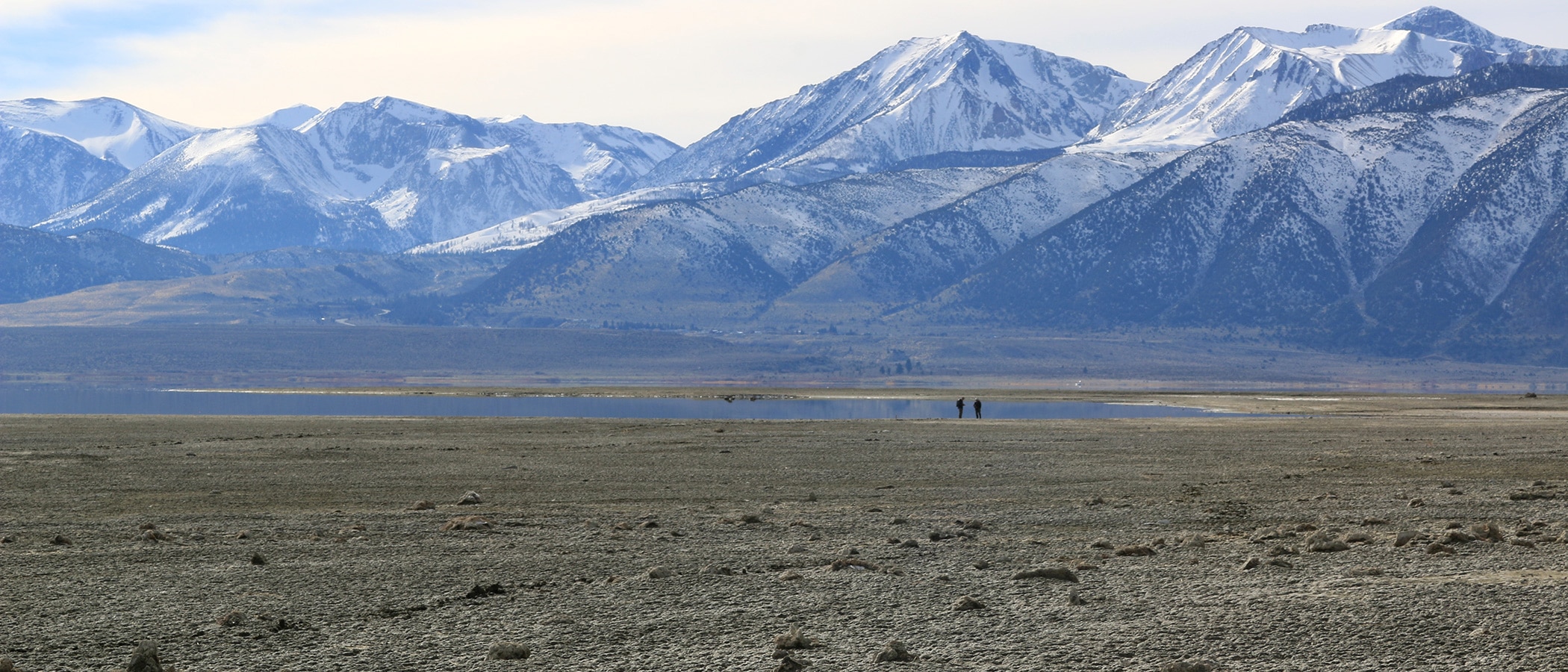
Hydrologic forecast shows lake level dropping into risky territory
As California enters another year of drought, the Mono Lake level forecast for the 2021–2022 runoff year is in, and the outlook is not good. The lake is projected to drop more than a foot, falling to a surface elevation below 6380 feet above sea level by the end of 2021.
Half of the lake level gains made since the last drought have already been lost, and we are once again in consecutive dry years with very little buffer against the severe consequences of low lake levels on Mono Lake, the birds and wildlife that depend on it, and people, too.
At an elevation of 6380′, the lake will be just five feet above where it was when the State Water Board issued its decision to save Mono Lake in 1994, and 12 feet below the management lake level of 6392′.
Around 6379′ the landbridge between he mainland and the islands where California Gulls nest is exposed enough, and the water crossing shallow and short enough, that curious coyotes are more likely to discover the nesting colony and prey on eggs and chicks. This year the gull colony is likely safe from coyotes, but even an average winter could put the gulls in grave danger next spring.
In 2017, the Mono Lake Committee undertook the formidable process of setting up a temporary electric fence across the landbridge that deterred coyotes and allowed the gulls to nest safely. The Committee could, and will, do that again, but an electric fence is not always going to solve the problem. If a multi-year drought causes the lake to fall even further, the landbridge will grow in size, creating multiple pathways for coyotes to reach the gulls, requiring additional fence segments and a logistical effort that could ultimately become infeasable. The far better solution is to raise Mono Lake to the required management level to permanently submerge the landbridge.
Mono Lake is the largest source of PM-10 particulate air pollution in the United States due to dust blown off of broad swaths of exposed lakebed. Air pollution violations generally increase as the lake level decreases, and the State Water Board chose 6392′ in part because covering the dust-emitting parts of the lakebed with water is the most effective solution to meeting the requirements of the Clean Air Act. Similar to solving the gull predation problem, ultimately, raising the lake level is the best solution.
If the lake turns out to be below 6380′ on April 1, 2022, it would mean a reduction in water exports to Los Angeles from 16,000 acre-feet to 4,500 acre-feet. The rules that reduce and even stop water exports were made to protect the lake from dropping deep into risky territory. While these reductions in exports are important safeguards against a perilously low Mono Lake, this would be the third time they have been triggered. This is yet another concerning sign that the lake, at the current artificially low level, is more vulnerable to drought than the State Water Board expected (see page 3) and why it is time to re-examine the rules governing the Los Angeles Department of Water & Power’s water exports.
This post was also published as an article in the Summer 2021 Mono Lake Newsletter. Top photo by Bartshe Miller.
